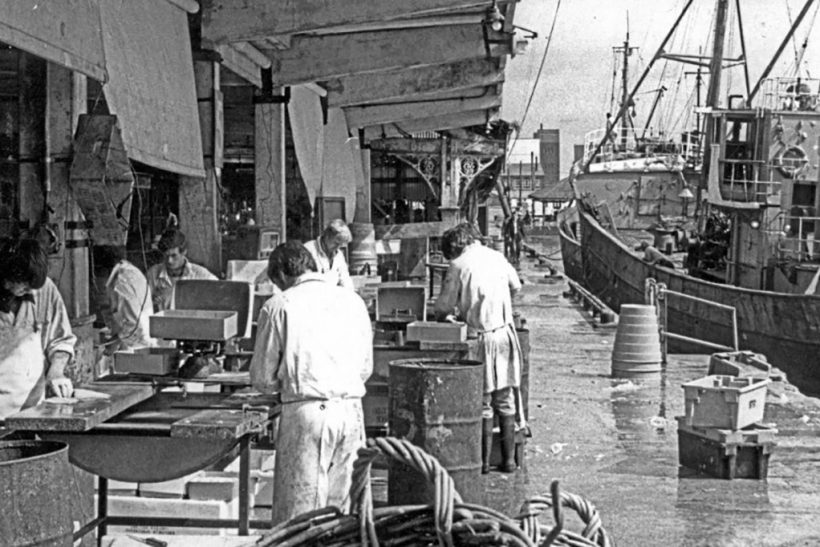For decades Lowestoft was one of the leading ports in the UK, with large quantities of fish being sold on the market floor daily before being delivered by local processors by rail to a number of locations. One of the main destinations for East Anglian fish was the insatiable Billingsgate market, for which Lowestoft was ideally situated, being one of the closest main landing centres to London.
The rich fishing grounds of the central and southern North Sea yielded consistent fishing for the Lowestoft fleet, which at one time consisted mainly of steam trawlers and drifters. The development of diesel engines resulted in a gradual transition towards a new class of vessel. This was maintained by the introduction of stern trawlers, at the same time as a number of vessel owners diversified into beam trawlers, when plaice became one of the main species landed at Lowestoft.
As with many other leading fishmarkets in England, filleting rapidly displaced the previously dominant whole fish trade from the mid-1940s onwards.
The main photograph (top) shows filleters cutting whitefish in Waveney Dock, Lowestoft in August 1980, with one of the traditional side trawlers similar to St Rose and St Nicola owned by the Colne Group, berthed alongside the quay after landing. The presence of the characteristic wicker fish baskets and the newly introduced plastic injection moulded fish boxes provides an interesting contrast.
Photograph two is of the UK fisheries Minister of the day, John MacGregor (right) accompanied by George Elson, the District Inspector of Fisheries, watching whitefish being filleted in September 1983.
The third photograph shows whitefish being sampled, probably in the early 1960s, shortly after the introduction of the aluminium trunks widely used by herring drifters that followed the migrating herring shoals each year from Shetland to East Anglia.
Read more form Fishing News here.


For decades Lowestoft was one of the leading ports in the UK, with large quantities of fish being sold on the market floor daily before being delivered by local processors by rail to a number of locations. One of the main destinations for East Anglian fish was the insatiable Billingsgate market, for which Lowestoft was ideally situated, being one of the closest main landing centres to London.
The rich fishing grounds of the central and southern North Sea yielded consistent fishing for the Lowestoft fleet, which at one time consisted mainly of steam trawlers and drifters. The development of diesel engines resulted in a gradual transition towards a new class of vessel. This was maintained by the introduction of stern trawlers, at the same time as a number of vessel owners diversified into beam trawlers, when plaice became one of the main species landed at Lowestoft.
As with many other leading fishmarkets in England, filleting rapidly displaced the previously dominant whole fish trade from the mid-1940s onwards.
The main photograph (top) shows filleters cutting whitefish in Waveney Dock, Lowestoft in August 1980, with one of the traditional side trawlers similar to St Rose and St Nicola owned by the Colne Group, berthed alongside the quay after landing. The presence of the characteristic wicker fish baskets and the newly introduced plastic injection moulded fish boxes provides an interesting contrast.
Photograph two is of the UK fisheries Minister of the day, John MacGregor (right) accompanied by George Elson, the District Inspector of Fisheries, watching whitefish being filleted in September 1983.
The third photograph shows whitefish being sampled, probably in the early 1960s, shortly after the introduction of the aluminium trunks widely used by herring drifters that followed the migrating herring shoals each year from Shetland to East Anglia.
Read more form Fishing News here.





